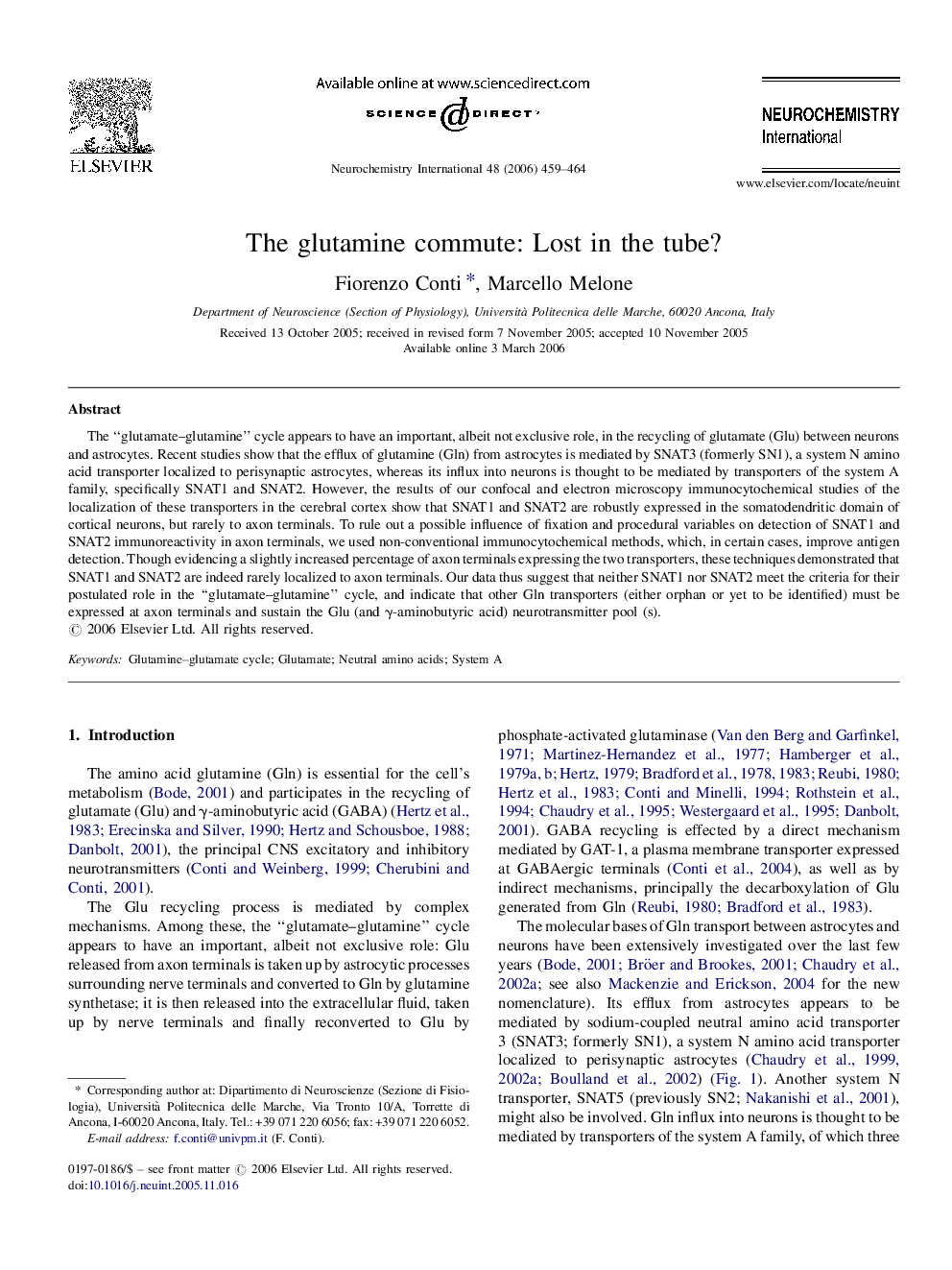| Article ID | Journal | Published Year | Pages | File Type |
|---|---|---|---|---|
| 2202191 | Neurochemistry International | 2006 | 6 Pages |
The “glutamate–glutamine” cycle appears to have an important, albeit not exclusive role, in the recycling of glutamate (Glu) between neurons and astrocytes. Recent studies show that the efflux of glutamine (Gln) from astrocytes is mediated by SNAT3 (formerly SN1), a system N amino acid transporter localized to perisynaptic astrocytes, whereas its influx into neurons is thought to be mediated by transporters of the system A family, specifically SNAT1 and SNAT2. However, the results of our confocal and electron microscopy immunocytochemical studies of the localization of these transporters in the cerebral cortex show that SNAT1 and SNAT2 are robustly expressed in the somatodendritic domain of cortical neurons, but rarely to axon terminals. To rule out a possible influence of fixation and procedural variables on detection of SNAT1 and SNAT2 immunoreactivity in axon terminals, we used non-conventional immunocytochemical methods, which, in certain cases, improve antigen detection. Though evidencing a slightly increased percentage of axon terminals expressing the two transporters, these techniques demonstrated that SNAT1 and SNAT2 are indeed rarely localized to axon terminals. Our data thus suggest that neither SNAT1 nor SNAT2 meet the criteria for their postulated role in the “glutamate–glutamine” cycle, and indicate that other Gln transporters (either orphan or yet to be identified) must be expressed at axon terminals and sustain the Glu (and γ-aminobutyric acid) neurotransmitter pool (s).
